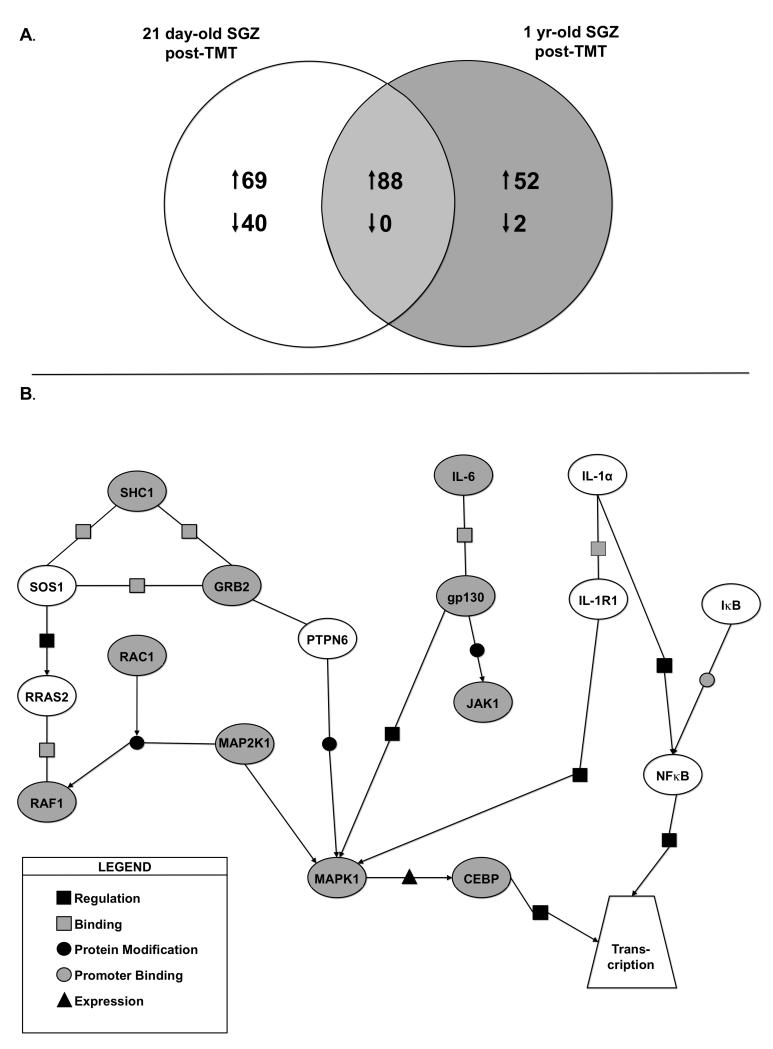Figure 7.
ANOVA was used to identify genes differentially expressed in TMT-treated versus saline-treated SGZs while taking into account the age-related interaction. (A) Venn diagram represents differentially expressed genes (1.2-fold or greater) by two-way error weighted ANOVA (ANOVA p<0.001 with Benjamini-Hochberg FDR p<0.05). (B) Graphical representation of differentially expressed genes following TMT-induced injury in 21 day-old versus 1 yr-old mice created using Pathway Archictect. Genes were then further analyzed using the categories of binding, expression, metabolism, promoter binding, protein modification and regulation (see legend). In this analysis, age was considered a mediator of injury related differential expression patterns using ANOVA. These data suggest key molecules in the IL-6 signaling pathway are upregulated (grey ovals) in the 1 yr-old SGZ following injury. Alternatively, IL-1α pathway genes are upregulated (white ovals) in the young SGZ following injury.

